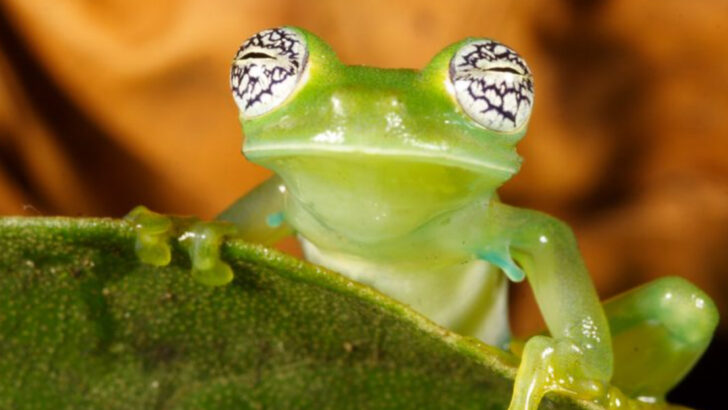Some animals look so bizarre, people refuse to believe they’re real. We’re talking alien eyes, glow-in-the-dark skin, and faces only a mother (or a very open-minded biologist) could love. For years, travelers, fishermen, and even scientists dismissed these creatures as hoaxes, Photoshop jobs, or tall tales spun around campfires. But then came the evidence—photos, bones, and DNA that proved nature has a wild sense of humor. From pink fairy armadillos to fish that walk like humans, these strange beings have baffled the internet and stunned experts. Each one has a story that blurs the line between myth and reality. So buckle up. These 14 animals might look fake, but they’re 100% real—and absolutely unforgettable.
Aye-aye
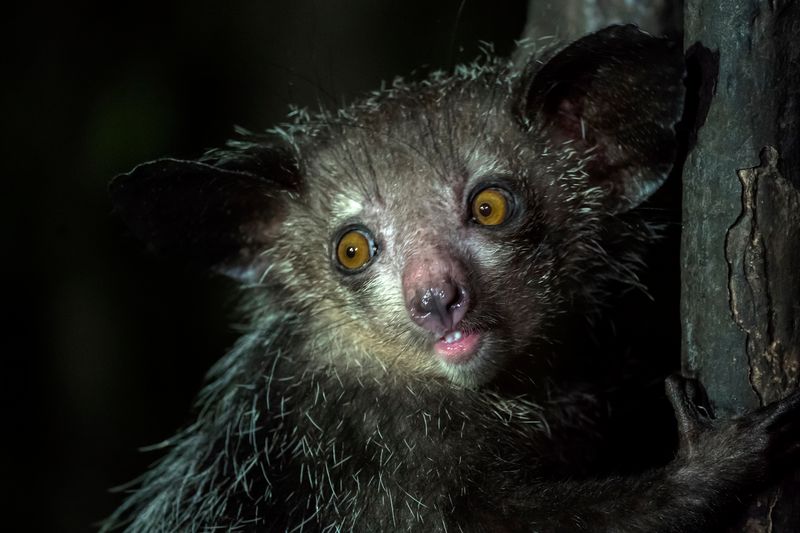
Often dismissed as folklore, the Aye-aye’s appearance is a curious mix of bat and monkey. Its oversized ears and long, bony fingers are adapted for nocturnal hunting in Madagascar’s dense forests. Aye-ayes tap on trees to find grubs, using their elongated middle finger to extract them. Their peculiar look led to myths that they were harbingers of evil. Today, they are recognized as vital to their ecosystem. With conservation efforts, these misunderstood creatures have become emblematic of Madagascar’s unique biodiversity. The Aye-aye’s story is one of nature’s unending creativity.
Goblin Shark

Lurking in the deep sea, the Goblin Shark looks like something from a horror film. Its pink skin and long snout, housing electro-sensitive organs, make it perfectly adapted to its dark environment. When prey comes near, its jaws extend rapidly to snatch them up. This species remained a mystery for centuries due to its elusive nature. Only recently have scientists begun to understand its role in the ocean’s ecosystem. While not the most graceful, the Goblin Shark’s bizarre appearance makes it one of the ocean’s most intriguing inhabitants.
Saiga Antelope
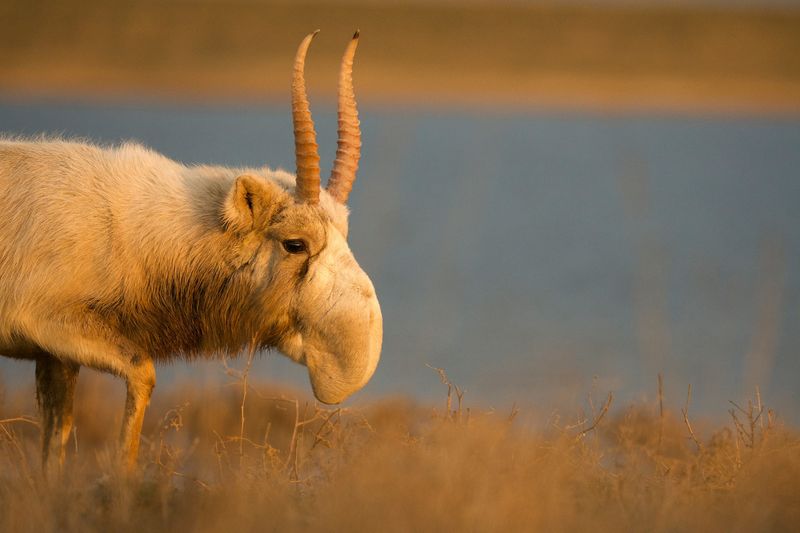
With a nose that appears more fitting for a cartoon, the Saiga Antelope is an evolutionary marvel. Native to the Eurasian steppes, its oversized, humped nose filters dust and regulates air temperature. This unusual adaptation helps it survive in extreme climates. Unfortunately, poaching and habitat loss have endangered these peculiar creatures. Conservationists are now fighting to protect these antelopes, recognizing their ecological importance. The Saiga’s distinct features serve as a reminder of evolution’s power and the urgent need to preserve such marvels for future generations.
Axolotl
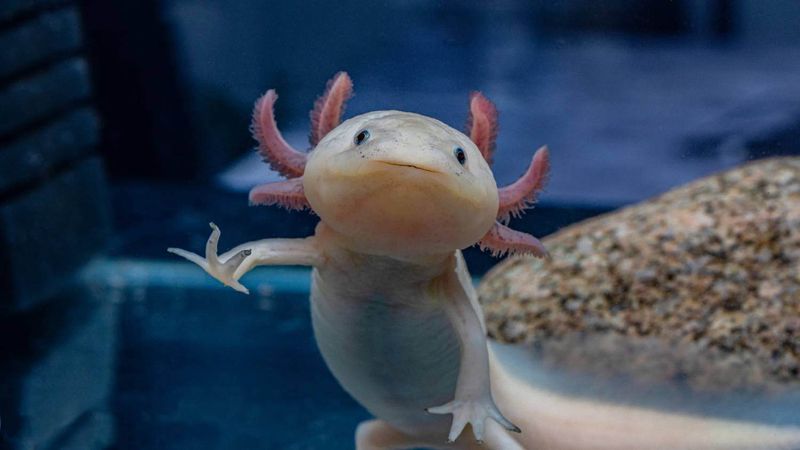
The Axolotl, with its perpetual smile and feathery gills, seems more fantasy than reality. Native to Mexico’s lakes, this salamander retains its larval features into adulthood, a phenomenon called neoteny. Its ability to regenerate limbs and organs has made it a focus of scientific research. Despite its notoriety, the Axolotl faces extinction in the wild due to pollution and habitat loss. Efforts are underway to conserve this enigmatic creature. Its charm lies in its resilience and the hope it offers for medical breakthroughs.
Blobfish

Dubbed the world’s ugliest animal, the Blobfish’s bloated, shapeless form is an adaptation to deep-sea pressures. When brought to the surface, its gelatinous body collapses, creating its infamous look. Despite its unseemly appearance, it plays a crucial role in its ecosystem. Living off the coast of Australia, it primarily feeds on crustaceans. The Blobfish underscores the incredible diversity of underwater life and the peculiar ways in which creatures adapt to their environment. While not photogenic, it is a testament to nature’s ingenuity.
Narwhal
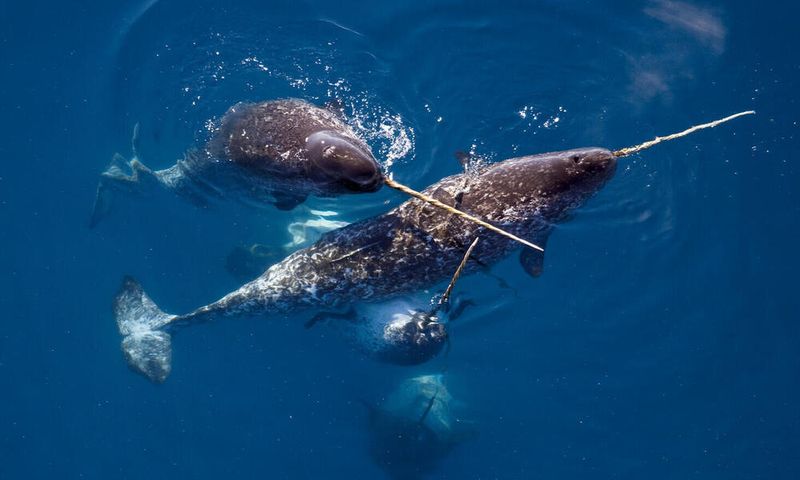
Often referred to as the “unicorn of the sea,” the Narwhal’s spiraled tusk has sparked legends and fantasies. This Arctic whale’s tusk is actually an elongated tooth, believed to have sensory capabilities. Narwhals navigate through icy waters in pods, their tusks occasionally used in gentle jousts. They are emblematic of the Arctic’s mystical allure and its fragile ecosystem. With climate change threatening their habitat, Narwhals have become symbols for conservation efforts aimed at preserving the Arctic’s unique wildlife.
Leaf-Tailed Gecko

Camouflage is an art perfected by the Leaf-Tailed Gecko. Found in Madagascar, this creature’s extraordinary tail resembles a decaying leaf, offering perfect cover from predators. Its body flattens against bark, completing the illusion. Beyond its appearance, the Gecko’s hunting skills are impressive, catching insects with precision. The Leaf-Tailed Gecko exemplifies adaptation and survival, embodying the wonders of evolutionary design. As deforestation threatens its habitat, this master of disguise serves as a poignant reminder of the delicate balance of nature.
Shoebill
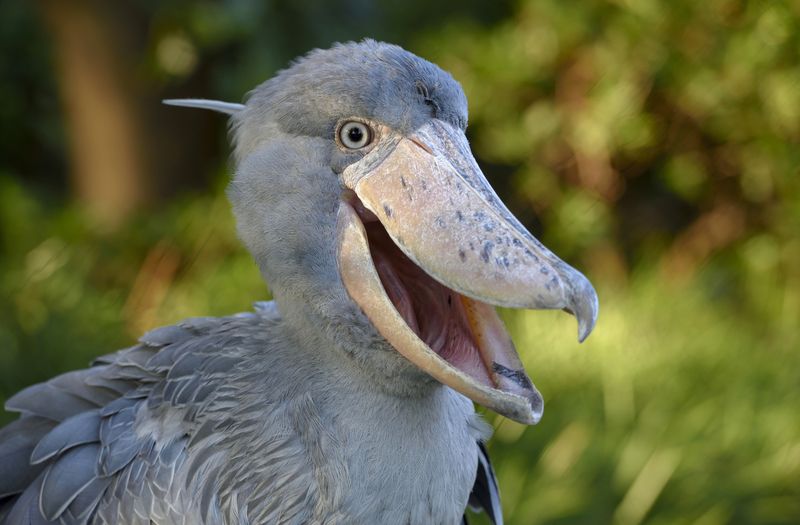
With a beak resembling a shoe, the Shoebill is a bird unlike any other. Native to African swamps, it stands motionless for hours, patiently waiting to catch fish. Its piercing stare and slow movements give it a prehistoric aura. Though daunting, the Shoebill is actually quite docile. Birdwatchers travel far to glimpse this enigmatic creature, drawn by its dinosaur-like presence. The Shoebill’s existence highlights the remarkable diversity of avian life. Protecting its wetland habitat is crucial to preserving this majestic, yet strange-looking bird.
Star-Nosed Mole

In the dim world beneath our feet, the Star-Nosed Mole reigns supreme with its bizarre star-shaped nose. Composed of 22 fleshy appendages, this nose is a tactile marvel, allowing the mole to detect prey with incredible speed. Found in North America, it thrives in wet lowland areas. Despite its odd appearance, the mole is a fascinating study in sensory adaptation. It reminds us that beauty in nature is not always immediately apparent. The Star-Nosed Mole is a testament to the diversity of life underground.
Pangolin

Covered in scales, the Pangolin is a creature both armored and elegant. When threatened, it curls into a tight ball, protected by its tough exterior. Found in Africa and Asia, Pangolins are the only mammals with scales, used for both defense and burrowing. Their gentle demeanor belies a critical role in controlling insect populations. However, they are critically endangered due to illegal poaching. Conservationists strive to protect these unique animals, emblematic of the urgent need to combat wildlife trafficking and preserve biodiversity.
Tarsier
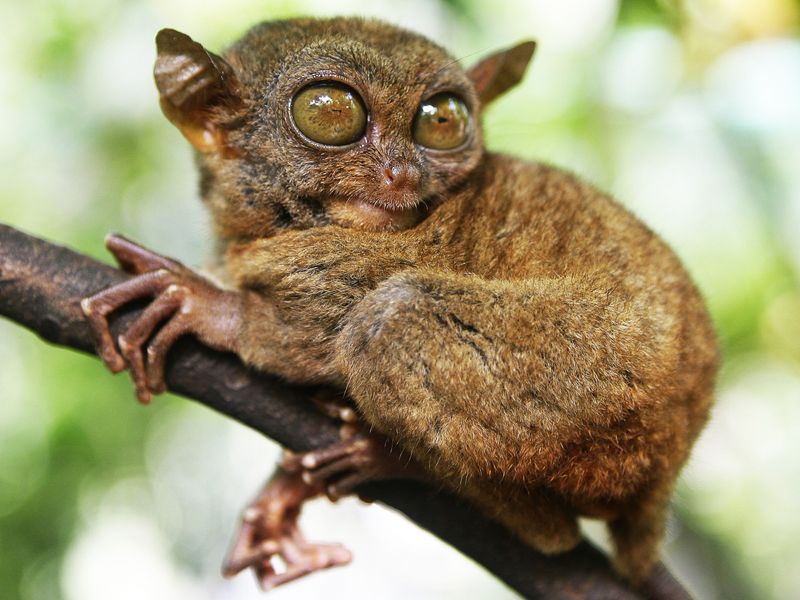
With eyes larger than its brain, the Tarsier is a primate of peculiar proportions. Native to Southeast Asia, its nocturnal lifestyle is supported by acute night vision and incredible leaping abilities. Despite its small size, it is a fierce predator, feeding on insects with precision. The Tarsier’s endearing appearance masks a complex behavior and crucial ecological role. Habitat destruction threatens its survival, prompting conservation efforts. This tiny primate reminds us of the fragility and resilience of life in the world’s rainforests.
Okapi
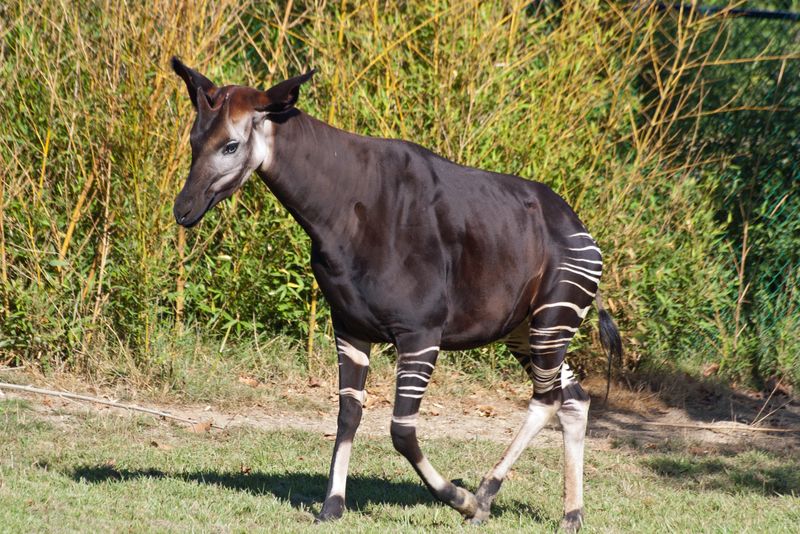
Once thought to be a cryptid, the Okapi’s blend of zebra stripes and giraffe shape puzzled explorers for years. Residing in the dense rainforests of the Congo, its stripes provide camouflage amidst the trees. The Okapi is a solitary creature, rarely seen in the wild, adding to its mystique. As the only living relative of the giraffe, it plays a vital role in its habitat. The Okapi symbolizes nature’s inventiveness and the continual quest for discovery and understanding in the animal kingdom.
Frilled Shark
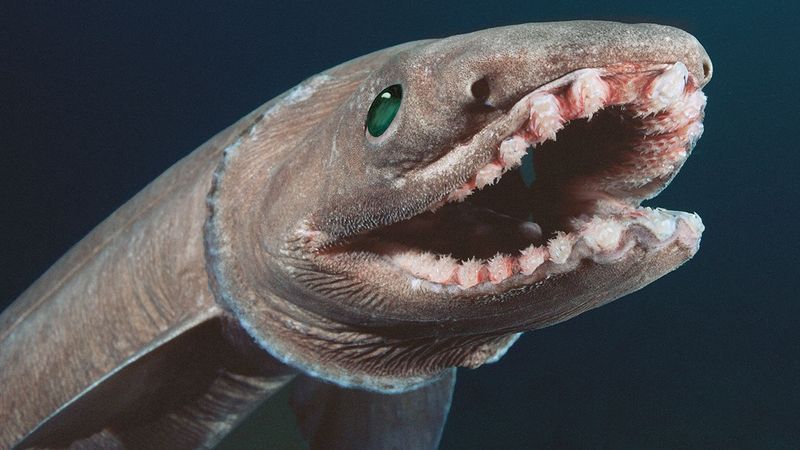
Resembling something from a prehistoric past, the Frilled Shark is a living fossil. Its elongated body and frilled gills set it apart from modern sharks. Dwelling in deep ocean waters, it captures prey with a lightning-fast lunge. This rare species offers insights into evolutionary history, preserving traits from ancient ancestors. While seldom seen, the Frilled Shark fascinates researchers with its primitive anatomy and elusive nature. It serves as a reminder of the ocean’s ancient mysteries and untapped knowledge.
Glass Frog
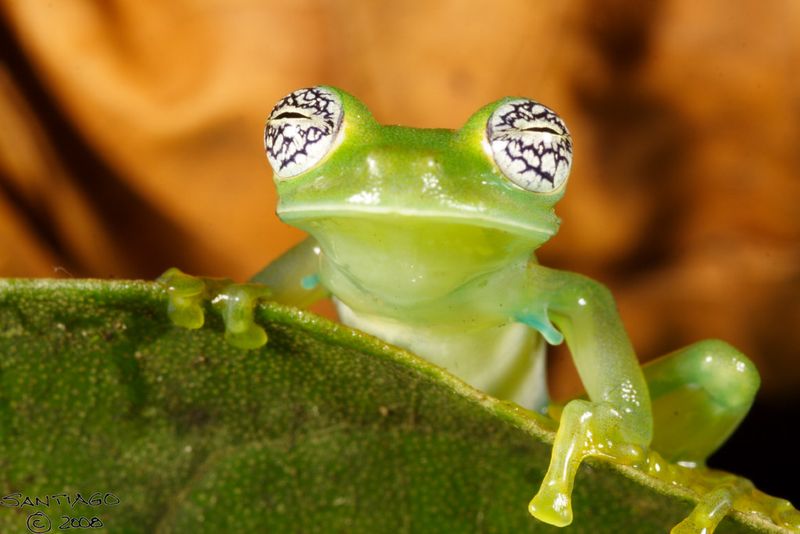
The glass frog captivates with its translucent skin, offering a mesmerizing glimpse into its inner workings. As you peer closely, the spectacle of its heart beating is visible, lending it an ethereal quality that intrigues scientists and nature lovers alike. Found primarily in Central and South America, these frogs are not just visually striking but play a vital role in their ecosystem.
Their skin, which reveals internal organs, serves as both camouflage and a survival mechanism. This dual function has left many pondering over its delicate existence. Despite its fragile appearance, the glass frog thrives in lush rainforests.

